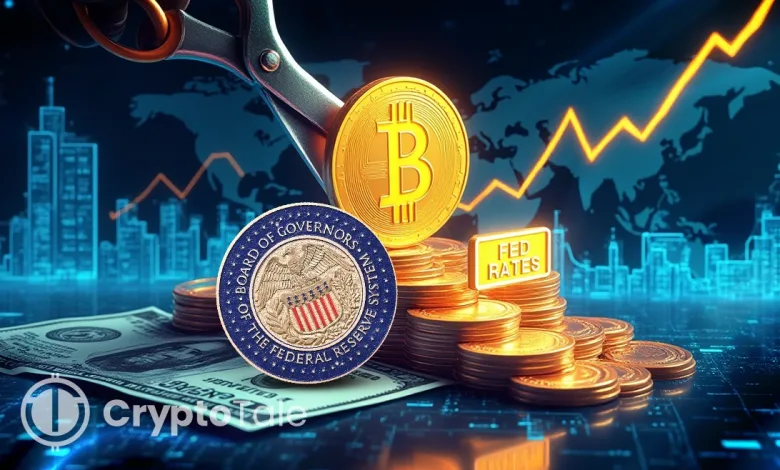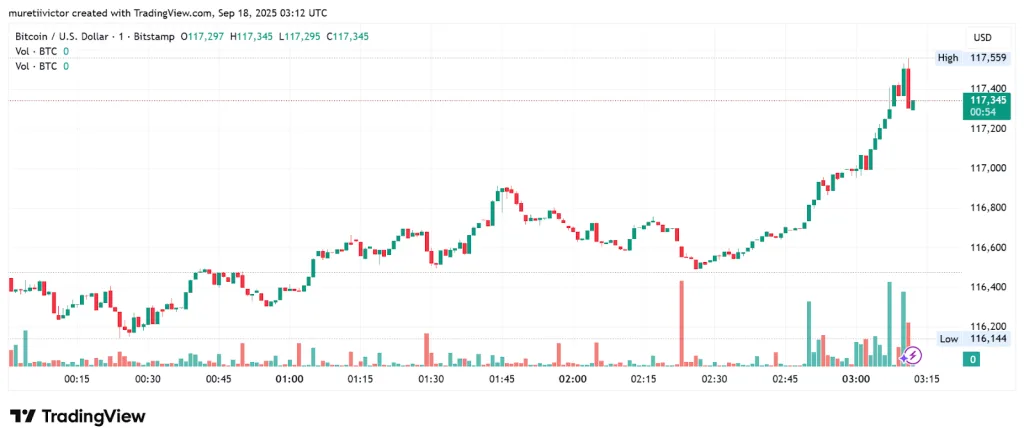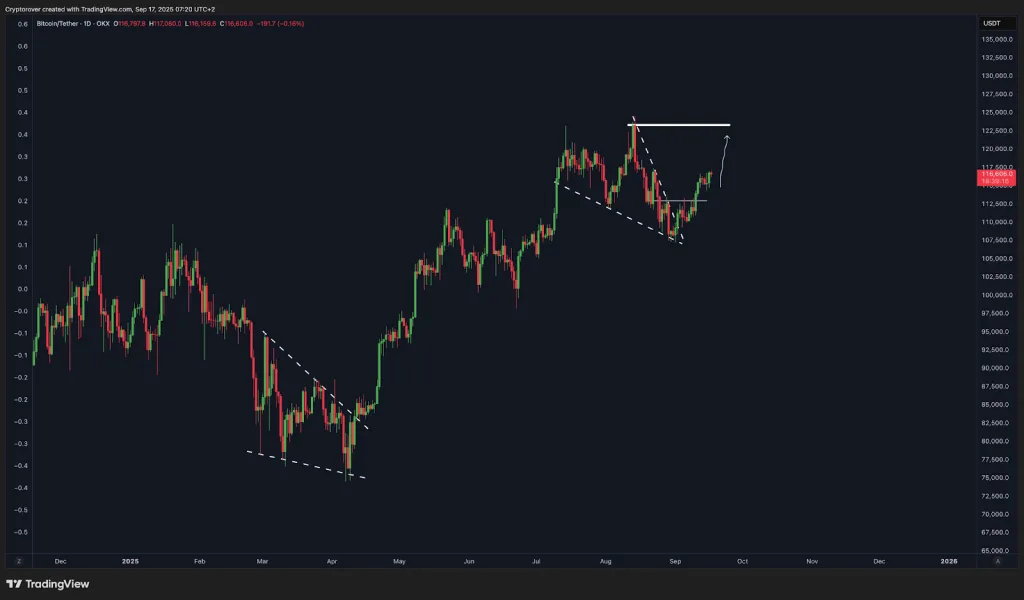Fed’s First Rate Cut of 25 bps Triggers Volatility in Bitcoin

- Fed makes first 2025 quarter-point rate cut to 4.0%–4.25%, signaling more easing ahead.
- Bitcoin holds above $116K after Fed cut, with $296M ETF inflows supporting demand.
- Lower U.S. rates reduce bond yields, boosting Bitcoin’s long-term bullish outlook.
The U.S. Federal Reserve made its first rate cut of 2025, lowering the federal funds rate by 25 basis points to a range of 4.00%–4.25%, as policymakers moved to support slowing growth while inflation remains above target. Officials voted 11–1, with one dissent, in favor of a larger move. In its statement, the Fed noted that job gains have slowed, and the unemployment rate has edged higher, though it remains low.
Chair Jerome Powell described the decision as a “risk-management”, signaling that more cuts are likely before year-end, as teh central banks shift toward easier policy. Reportedly, newly appointed Governor Stephen Miran cast the lone dissent, pushing for a 50 basis point cut.
President Donald Trump, who has consistently urged the Fed to lower rates, renewed his calls this week. In his social post, he pointed out that the Fed must cut “bigger than Powell had in mind,” adding political weight to expectations of continued monetary easing.
Bitcoin Steadies With Rate Cut
Despite the rate cut, the immediate reaction in crypto markets was volatile, with Bitcoin hovering around the $117,000 level. At press time, Bitcoin is trading at $117,345, with a 24-hour range of $114,794 to $117,500. CoinMarketCap also showed that cryptocurrency trading is 6.2 % below its all-time high of $124,457, set in August.

Source: TradingView
In addition, analysts identify a key support range between $115,000 and $113,000, and falling below $110,000 could shift momentum to bearish. If support holds, $117K—$120K stands as initial resistance, followed by the August peak near $124K.
A sustained break above those levels would signal that easier policy and ongoing inflows have re-accelerated the trend. However, a failure would keep range trading in place until the next data print or policy signal. Moreover, Bitcoin broke out of a falling wedge and entered an ascending channel in early September, signaling renewed bullish momentum.

Source: X
On the other hand, exchange-traded fund (ETF) flows continued to support optimism. Bitcoin spot ETFs recorded net inflows of 2,544 BTC on Wednesday, valued at approximately $295 million. Notably, BlackRock’s IBIT accounted for the largest inflow on Sept. 17. These institutional inflows give structural support to Bitcoin despite the short-term price weakness.
Further, over $105 million in crypto positions were liquidated within an hour after Powell’s press conference, with $88.8 million in longs and $17 million in shorts forcibly closed. The sharp volatility pulled total crypto market capitalization down 0.9% to $4.08 trillion before regaining momentum.
Related: Bitcoin Holds $116K as Traders Await Fed Rate Cut Clues
Why lower rates matter for digital assets?
Lower interest rates reduce yields on traditional investments, prompting investors to consider alternative assets, such as cryptocurrencies. Analysts at Kraken noted that the next 100 basis points of rate cuts may have a more notable effect on asset prices than the last cycle of hikes, and pointed out that investors see normalized rates near 3.0% to 3.5%, a level that could boost demand for Bitcoin and other digital assets.
September has historically been one of the weakest months for cryptocurrencies, but market participants suggest conditions are forming for a potential end-of-year rally. Bitwise CIO Matt Hougan noted that “rate cuts, strong ETF inflows, and rising tokenization momentum” could fuel a stronger fourth quarter for the sector.
Analysts suggested that part of the rate cut may have already been priced into markets. Bitcoin futures open interest surged following the FOMC announcement, showing heightened leveraged activity, while spot trading volumes declined. Furthermore, this divergence suggests that speculative positions rather than direct buying are driving much of the current price action.




